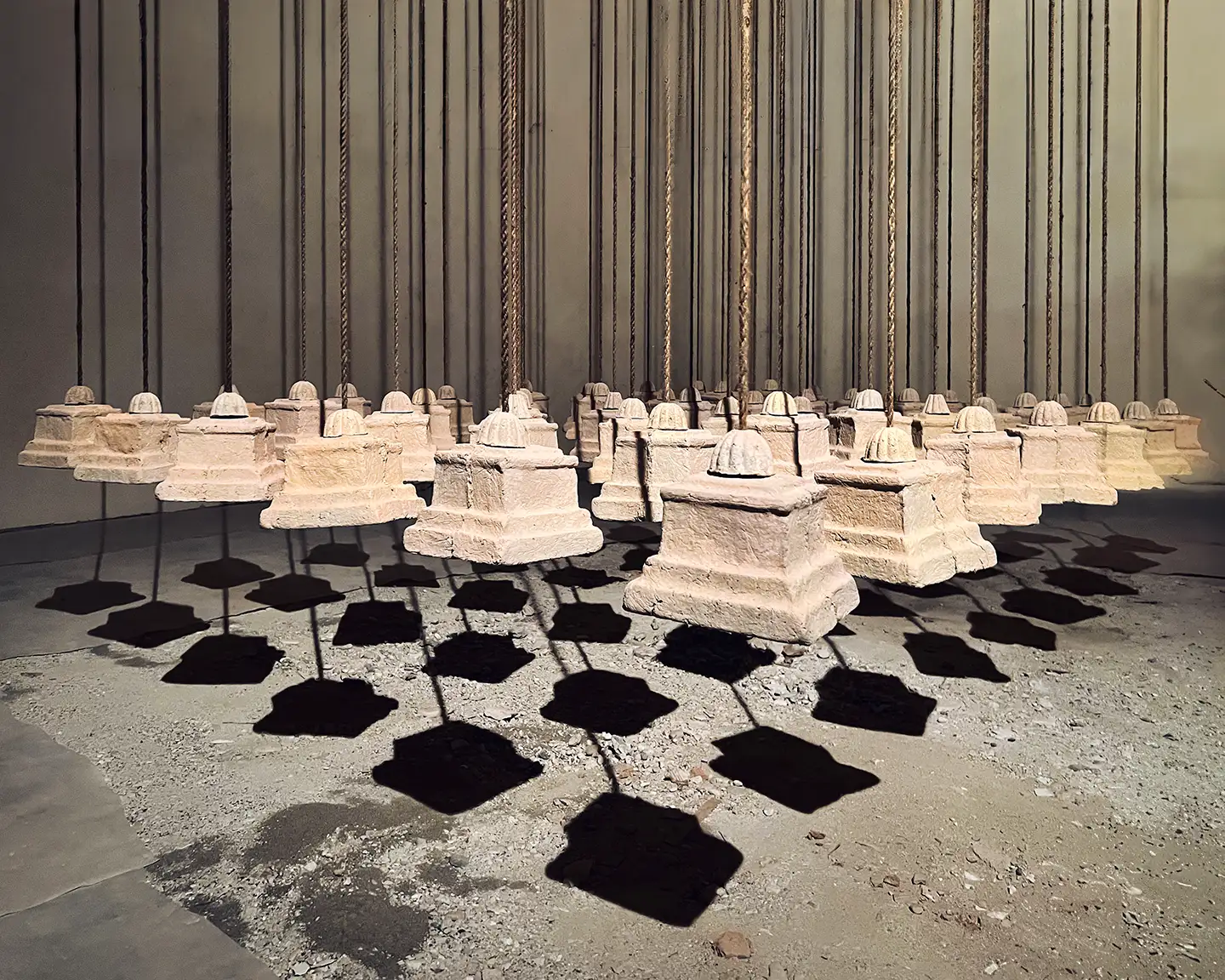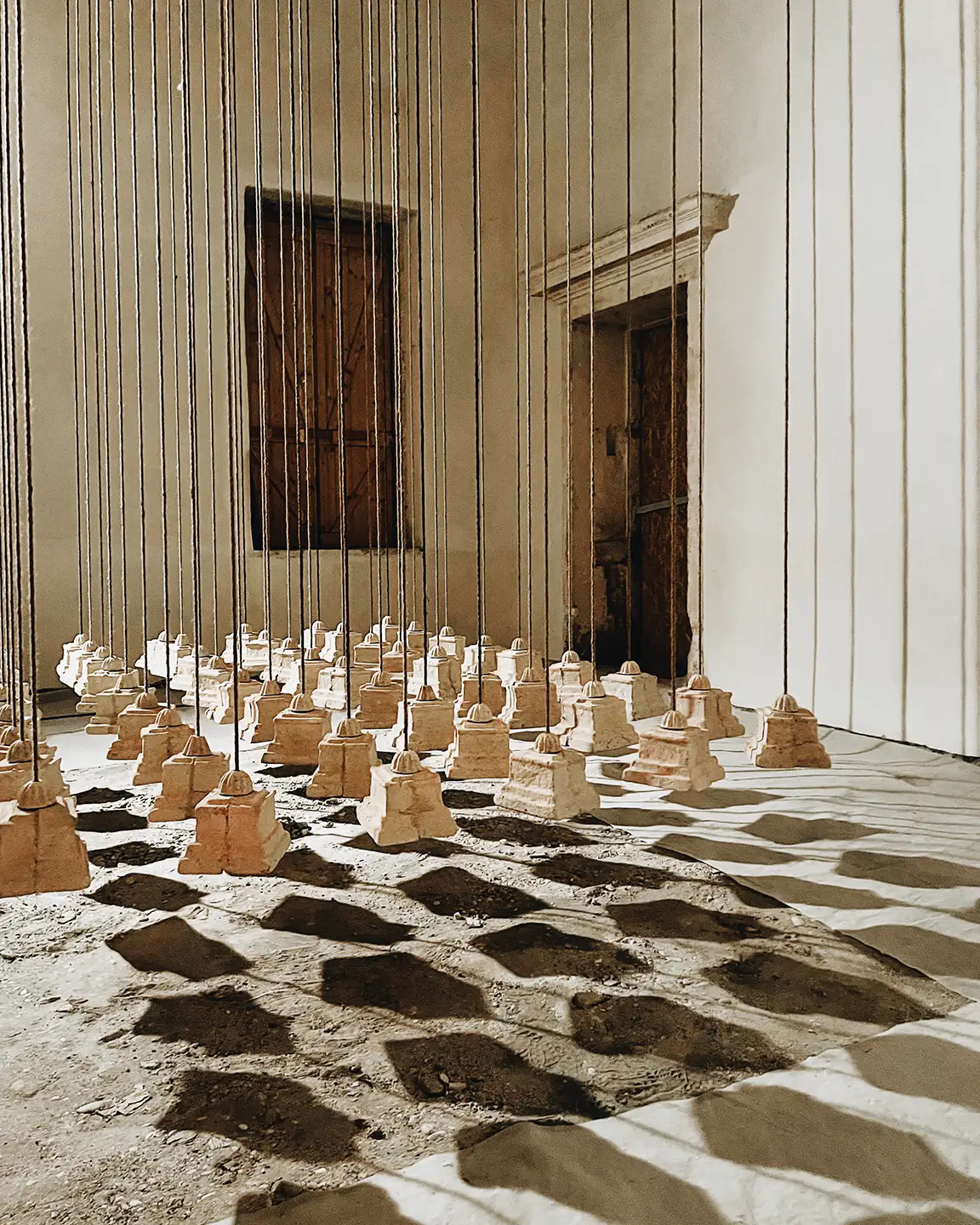
To Make and Make Again (Fare e rifare)
Fifty-four cast paper pulp objects and jute cord
200x300x700cm
Futurismo a cura di Elisa Spanevello e Domenico Scolaro | Villa da Porto, Montorso Vicentino (VI) | September 2023
“I do not trouble myself about chronology in my meditation. It delights me to tell of the Magdalene and what she did at this time according to my fancy.” —Anonymous, Italy, 14th century
From the Middle Ages, Mary Magdalene, sinner-turned-saint in the traditional Western view, has had many devotees including the Da Porto family, who constructed a chapel in her honor on their property in the late 1400s. The chapel was heavily damaged and looted by German raiders in 1513, restored by Luigi Da Porto in the following three years, then torn down to the ground for its wood in 1943.
The story behind the villa’s lost chapel gave me an opportunity to construct it anew.
My installation work often seeks to establish meditative spaces, not necessarily places of worship, but places where the viewer can experience scale, volume and atmosphere. We created fifty-four repeating objects, cast from the same mold, each slightly different. The objects were suspended from the ceiling in a grid pattern, all at the same level from the ground, sketching the mass of a rectangular column, anchoring the center of the room.
In paintings, we see Maria Maddalena with her attribute, a jar which contains the perfumed ointment she used to anoint the feet of Jesus. My object, cast in paper pulp culled from recycled supermarket packing paper, hints at this vessel but echoes other forms as well: Temples, toys, cakes, tassels or topiary.
“Non mi curo della cronologia nella mia meditazione. Mi rallegra raccontare della Maddalena e delle sue gesta secondo il mio capriccio.” —Anonimo italiano, XIV secolo
Dal Medioevo, Maria Maddalena, peccatrice trasformata (seconda la visione occidentale tradizionale), ha avuto molti devoti tra i quali la famiglia Da Porto che ha costruito una cappella in suo onore sulla sua proprietà alla fine del 1400. La cappella fu danneggiata e saccheggiata dai tedeschi nel 1513, restaurata da Luigi Da Porto nei tre anni seguenti, quindi rasa al suolo per riutilizzare materiali nel 1943.
La storia della cappella perduta di Villa Da Porto mi dà l’opportunità di costruirla di nuovo.
Le mie installazioni spesso cercano di generare spazi di meditazione; non necessariamente luoghi di culto, ma luoghi dove chi guarda può confrontarsi con scala, volume e atmosfera. Abbiamo creato cinquantaquattro oggetti in serie, stampati dallo stesso calco, ciascuno leggermente diverso. Gli oggetti penderanno dal soffitto, ordinati in una griglia, tutti alla stessa altezza da terra, disegnando la massa di una colonna rettangolare, come un’ancora al centro della stanza.
Nei dipinti, vediamo Maria Maddalena con il suo attributo, un vaso di unguento profumato che ha usato per ungere i piedi di Gesù. Il mio oggetto, uno stampo di cartapesta (carta riciclata dall’imballaggio del supermercato), allude a questo recipiente ma ricorda altre forme: nappe, tempietti, torte, giocatoli o topiaria.









